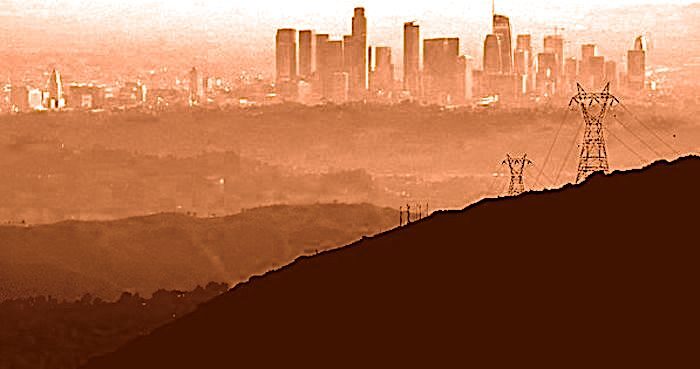
© Recharge NewsCalifornia power grid can't handle the heat wave
California's power grid operator declared a stage 3 energy emergency alert Tuesday evening, warning that rotating power outages were "very possible" as a brutal heat wave walloping the state pushed electricity demand to its limits.
California ISO warned residents earlier Tuesday to be prepared for the possibility of rotating power outages and issued an Energy Emergency Alert (EEA) 2 for 4 p.m. to 9 p.m.
Some 67,000 Californians were without power Monday evening, according to powerotage.us, while ongoing power outages affected more than 40,000 Pacific Gas and Electric Company customers across 28 counties.
The California Independent System Operator (ISO) tweeted:
Several hours later, at 8 p.m., the ISO ended the alert which was initially scheduled to continue until 9 p.m.
An emergency declaration Monday evening pulled additional resources onto the system when the power grid was dipping into reserves and there was the risk of power outages. Peak demand was more than
49,000 megawatts (MW).
California Gov. Gavin Newsom issued a statement Tuesday commending Californians' efforts so far, but qualified that everyone needs to "double down to save energy after 4 p.m."
Rep. Eric Swalwell, D-California, also rallied Californians, saying residents needed to do their "part to help avoid power outages this week."
"Before 4pm, pre-cool your home. After 4pm, avoid use of major appliances and turn your thermostat to 78 or higher," he tweeted. "Let's keep the lights on, California."
State energy officials said the electrical load Tuesday afternoon could top 51,000 megawatts, the highest demand the state has ever seen. The CAISO site Tuesday morning showed
California could fall more than 5,000 megawatts short of its power supply at peak demand, forecasted for 5:30 pm.
Meanwhile, the danger of wildfires was extreme as scorching heat and low humidity turned brush to tinder.
Four deaths were reported over the Labor Day weekend as some 4,400 firefighters battled 14 large fires around the state, with 45 new blazes on Sunday alone.California's energy grid runs on
a mix of mostly solar and natural gas during the day, along with some imports of power from other states. But solar power begins to fall off during the late afternoon and into the evening,
which is the hottest time of day in some parts of the state. And some aging natural gas plants California relies on for backup power aren't as reliable in hot weather.
At CAISO's request on Monday,
four temporary emergency power generators deployed by the Department of Water Resources in Roseville and Yuba City
were activated for the first time since they were installed last year, providing up to 120 megawatts, enough electricity for 120,000 homes.
CAISO also has issued a Flex Alert call for voluntary conservation between 4 p.m. to 10 p.m. Tuesday, making seven alerts in as many days. Consumers were urged to keep air conditioners at 78 degrees or higher during the period and avoiding using major appliances such as ovens and dishwashers.
The National Weather Service predicted highs between 100 and 115 degrees across inland California, with 80s to 90s closer to the coast. Nighttime won't bring much relief, with many places seeing lows in the 80s or even 90s.
California has mandated that all new cars sold in the state must be electric starting in 2035.
[Link]